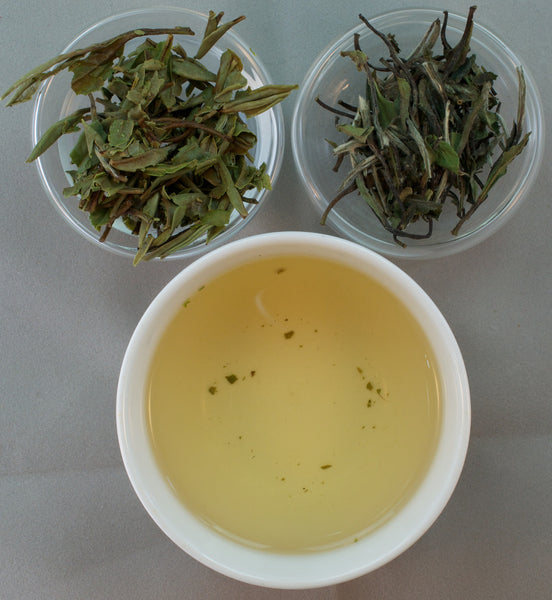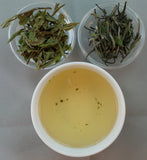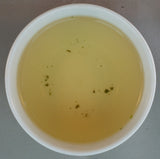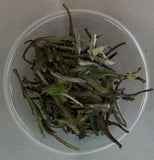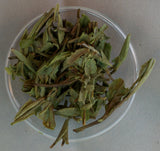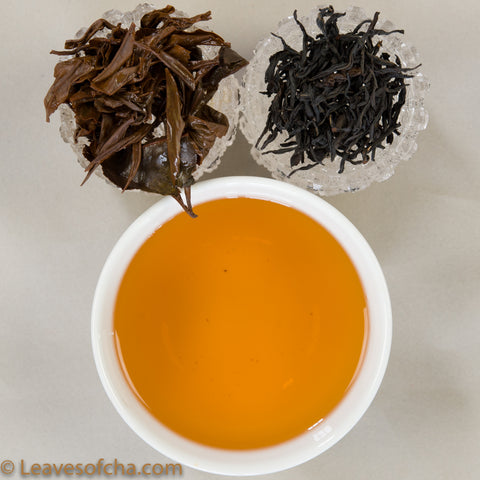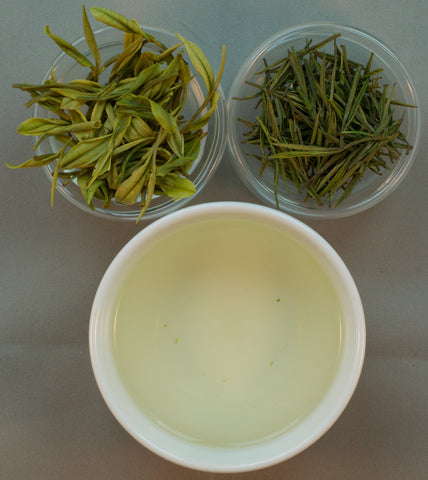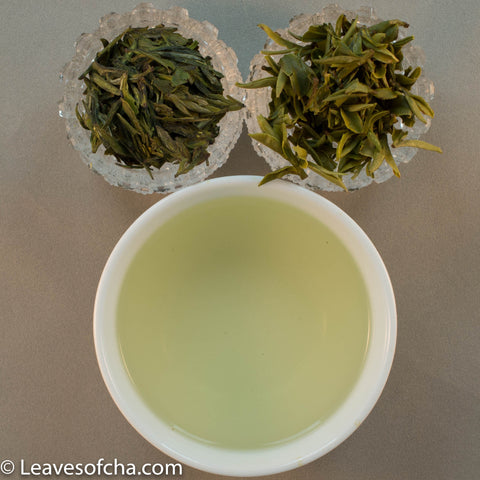Bai Mu Dan
$ 13.00
is on back order
Bai Mu Dan is a bud and leaf version of the traditional Silver Needle style bai cha (white tea) style. Including some leaf material in Bai Mu Dan helped meet the worldwide demand for white tea that would have been impossible to meet with a bud-only tea. The result can be just as delicious, however. Because white tea is processed so simply, it takes great leaf material to make great tea. 70% of the leaf material for this tea comes from the Chen’s ancestral family land in Wuyishan. The rest comes from the neighboring town of Zhenghe, another town famous for white tea. Their tea is considered to be the highest grade since it is grown on the “zhenyan”, or rocky soils unique to this region. The tea trees here are also allowed to grow naturally in spacious groves instead of carefully planted estate-style. The trees can be up to 100 years old. Plucked meticulously by hand, the Chen Family use traditional methods to maintain quality standards and produce stellar teas.
Provenance:
- Origin: Wuyishan Rock Tea Village, Wuyi Mountains, Fujian, China
- Grower/Teamaster: Zhou Shi Wu & Cindy Chen
- Harvest Date: April 2021
- Cultivar: Da Bai
- Cultivation: Natural (Organic, no cert.) The Wuyishan Scenic Area is strictly protected by the Chinese government, so absolutely no chemicals or pesticides are used.
- Plucking Standard: a bud and two leaves
- Processing Notes: Sun dried on traditional bamboo trays
- Nickname: White Peony
- History/Pedigree: This tea is relatively modern in the 200 year history of commercial white tea, being first produced in the 1920’s.
Brewing Suggestions1:
- Water: 175-185˚F filtered water
- Tea: 2g per 4oz of water (about a scant level 1.5 TB2)
- Infusion: 2 minutes with 2-4 additional steepings.
Tasting Notes:
Fruity, lush tea with hints of spice and fresh hay. A pure, delicate flavor profile.
1 Brewing suggestions are just that. Try it as suggested, and then experiment. In this case I suggest first experimenting with the length and number of infusions. You could also experiment with the quantity of tea per oz of water. For temperature, 175˚ gives a sweeter, smoother profile while 185˚ is more complex and stronger. Brewing at a lower temperature can prevent astringency from creeping to the profile. Some tea drinkers like to use slightly hotter and longer times for each subsequent infusion.
2 Weighing your tea is always the best way to control your dosage. I provide approximate volume measures for convenience but they can be problematic due to the variance in tea leaf shape and size.
